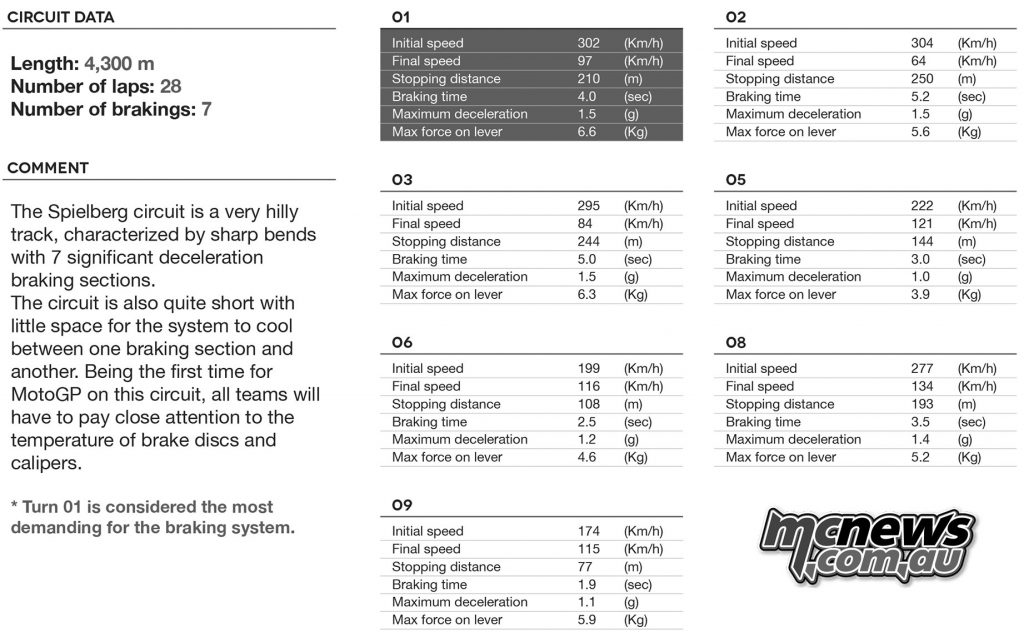Braking at Spielberg – MotoGP versus F1

Since the physical characteristics of the two ultimate expressions of race machinery from the two and four wheeled world are so radically different, many may say that any comparison is meaningless. However, I am sure some will find the comparative braking data quite fascinating.
Brembo has supplied the most important teams in the two championships for decades, and the Italian company have been kind enough to share their data with us for this feature.
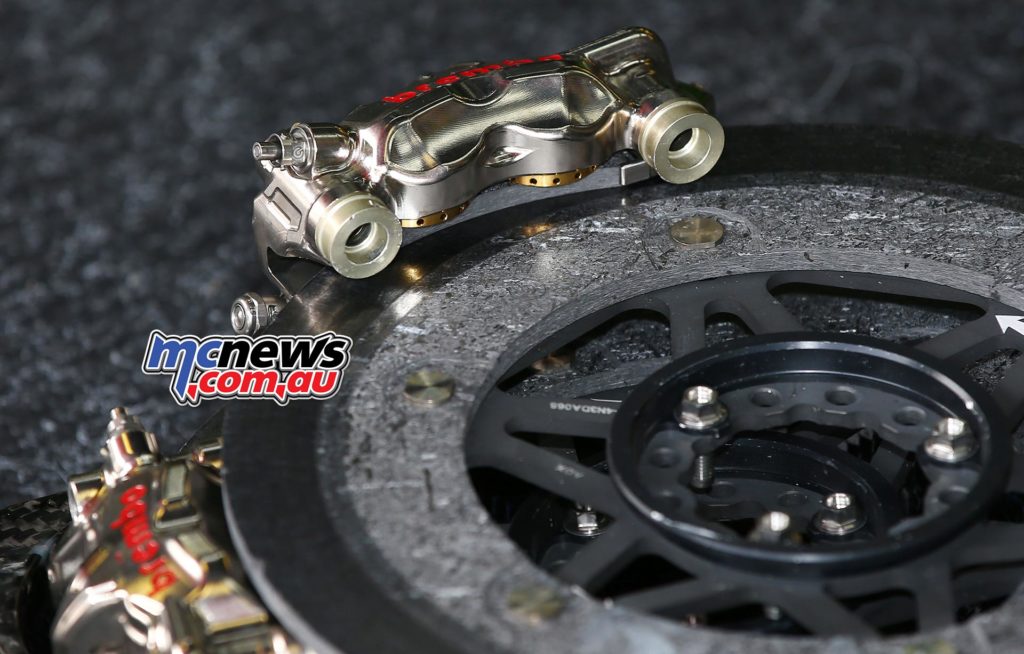
Firstly, let’s have a look at the technical specifications of the two vehicles, both their respective cream of the crop in the two and four wheeled worlds.
Weight
- Formula 1 – 702kg including driver
- MotoGP 157kg rider excluded
Engine
- Formula 1 – 1600cc Turbo
- MotoGP – 1000cc naturally aspirated
Front Tyres
- Formula 1 – 245mm
- MotoGP – 125mm
Rear Tyres
- Formula 1 – 325mm
- MotoGP – 190mm
Brakes
- Formula 1 – 278mm
- MotoGP – 340mm
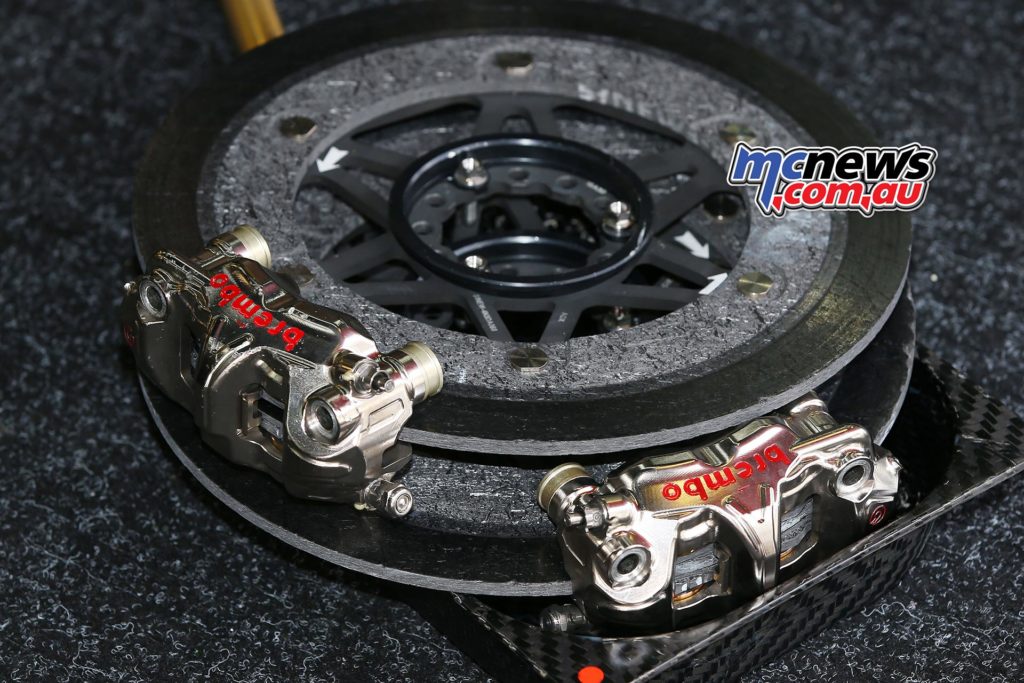
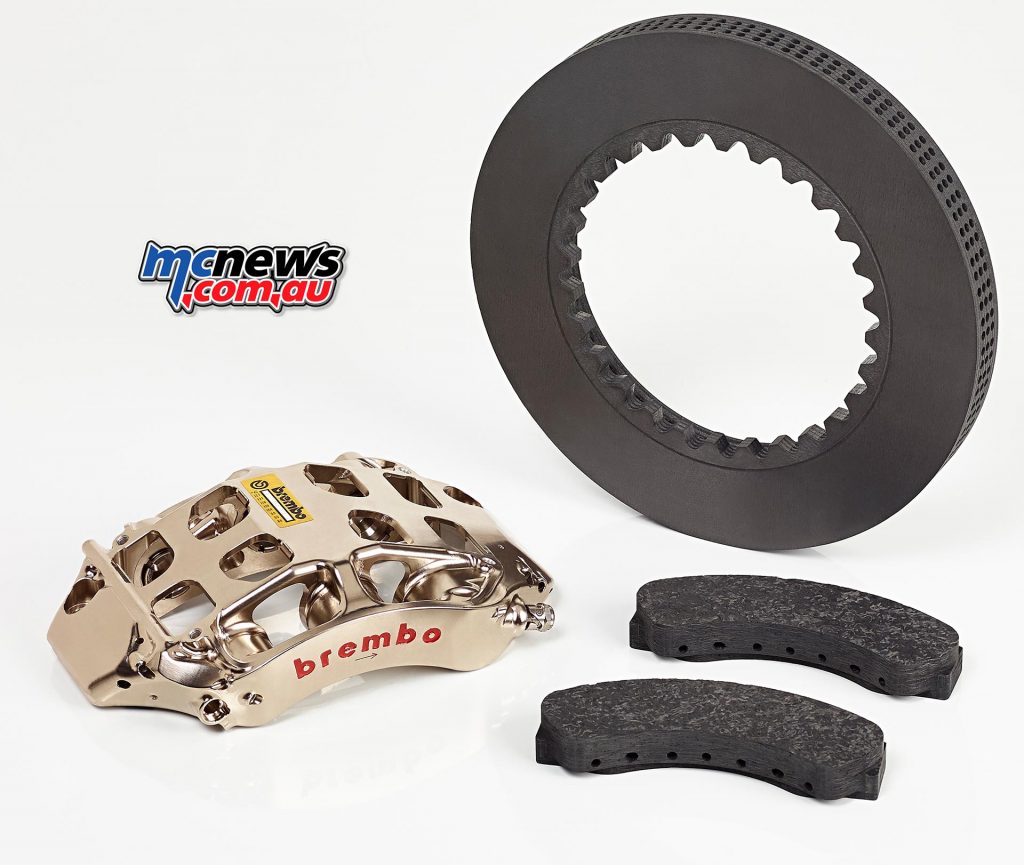
So, without counting the driver, a Formula 1 single-seater weighs four times as much as a MotoGP bike, but boasts a significantly more powerful engine, with the assistance of electric engine assistance also.
Formula 1 single-seaters have significantly wider tyres than MotoGP bikes. Besides the width of the tread, F1 and MotoGP also have a significantly different footprint: the surface of the tyre that touches the asphalt. While the full width of a F1 tire touches the asphalt, in MotoGP only a portion of the tread actually touches the tarmac.
F1 versus MotoGP on the Spielberg circuit
- Fastest Lap – 1m07.922 / Lewis Hamilton
- MotoGP – 1m23.240 / Andrea Iannone
When comparing L. Hamilton’s fastest lap when qualifying in 2016 to A. Iannone’s lap in last month’s test, there’s a gap of more than 15-seconds between Formula 1 and MotoGP.
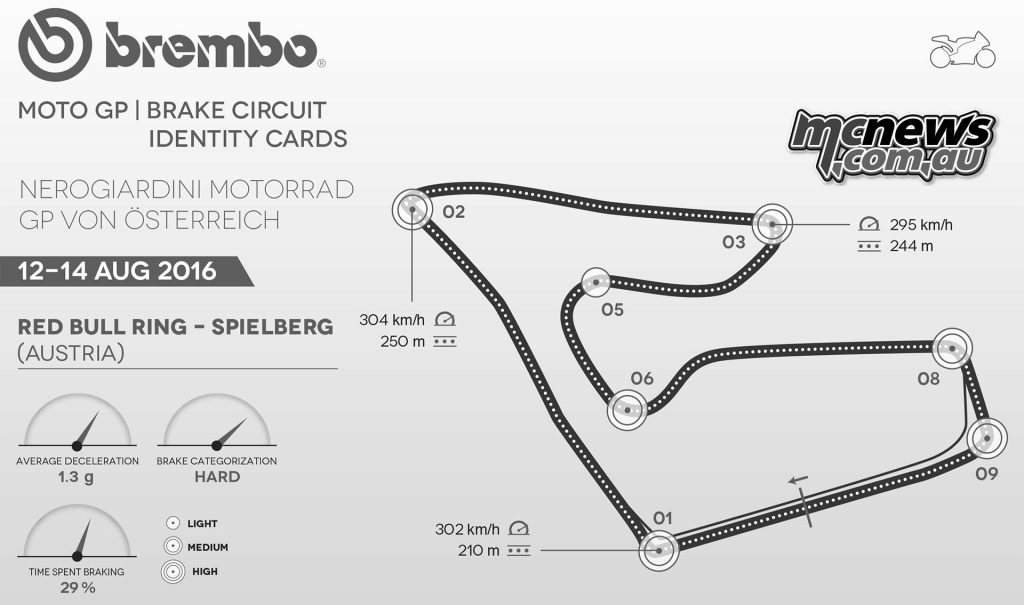
The limits of MotoGP are essentially two
- The time required to slow down enough to take a curve
- The speed when going through the curve.
Several factors come into play in both cases, especially
- The different dynamics of the two vehicles, MotoGP needs to factor in the risk of lifting the rear tyre under maximum deceleration and possibly even flipping the motorcycle over onto its nose
- The significant difference in vehicle aerodynamics, relatively non-existent for MotoGP, but a major factor in deceleration for F1;
- The sizeable difference of the tyre footprint for the two vehicles.
Three situations measured by Brembo on the Spielberg track help clarify that first point
- Braking Time at Turn One – Formula 1 / 1.3-seconds – MotoGP / 4-seconds
- Braking Time at Turn Three – Formula 1 / 1.5-seconds – MotoGP / 5-seconds
- Braking Time at Turn Eight – Formula 1 / 0.9-seconds – MotoGP / 3.5-seconds
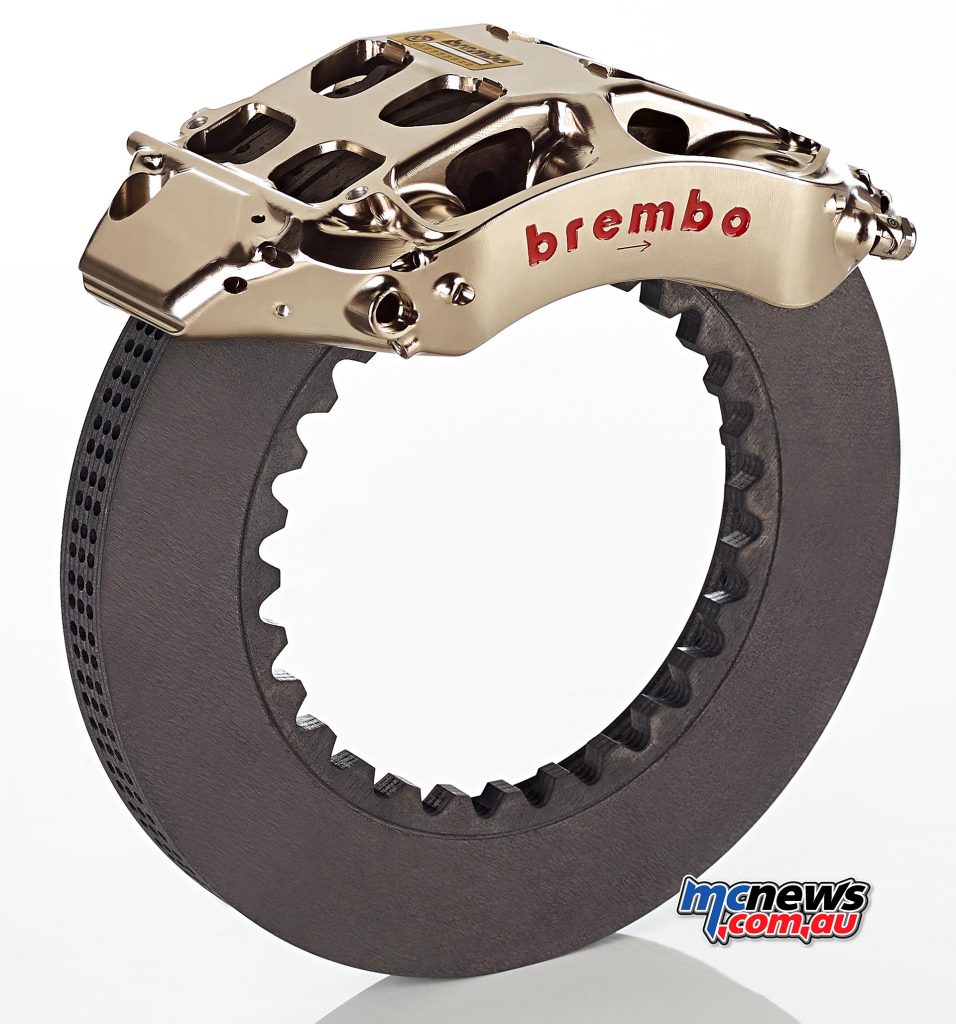
The second point is illustrated clearly by the following entry speed data
- Turn One Entry Speed – Formula 1 / 113km/h – MotoGP / 97km/h
- Turn Five Entry Speed – Formula 1 / 156km/h – MotoGP / 121km/h
- Turn Eight Entry Speed – Formula 1 / 179km/h – MotoGP / 134km/h
Naturally, the braking distance for the bikes is also significantly longer on the Spielberg circuit
- Braking Distance at Turn One – Formula 1 / 116 metres – MotoGP / 210 metres
- Braking Distance at Turn Two – Formula 1 / 146 metres – MotoGP / 250 metres
- Braking Distance at Turn Five – Formula 1 / 77 metres – MotoGP / 144 metres
The explanation is rather simple
Formula 1 vehicles can immediately discharge braking torque to the ground, since balance is not an issue; MotoGP riders, on the other hand, can’t use all the force at once, since having only two wheels available means there’s a high risk of flipping over.
In addition, the single-seaters have a ground footprint of the four treads that is well over four times that of a MotoGP bike: naturally, the greater the footprint, the greater the opportunity to discharge the braking torque to the ground.
This is why the decelerations that the riders and drivers face are in line with the characteristics of the vehicles that they command.
- Formula 1 Average Deceleration 4.4g
- MotoGP Average Deceleration 1.3g
- Formula 1 Maximum Deceleration 5g
- MotoGP Maximum Deceleration 1.5g
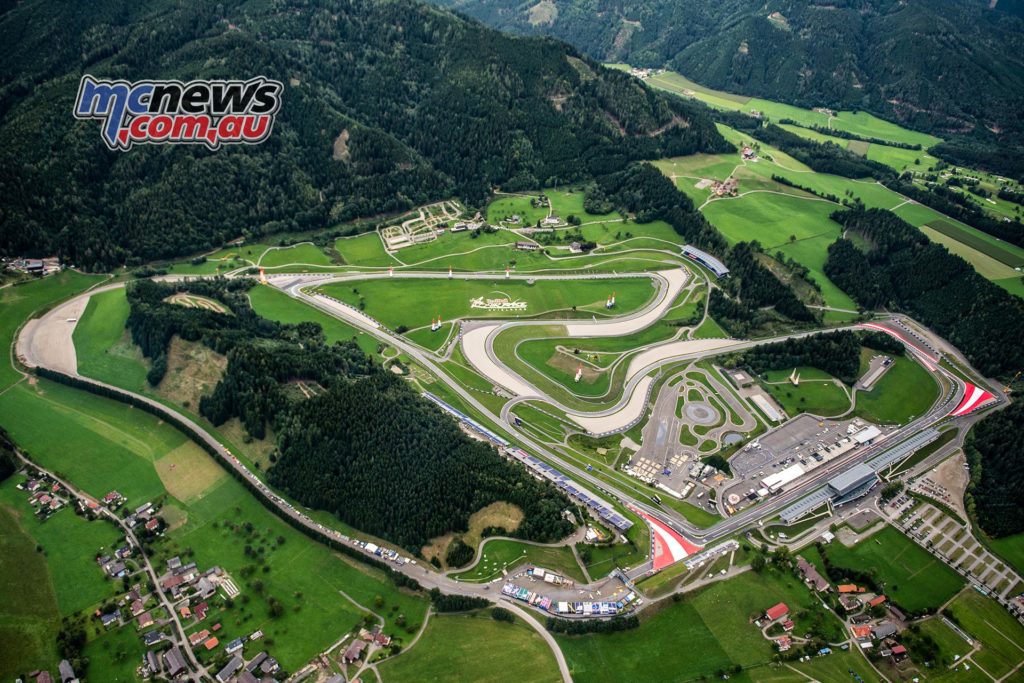
The new circuit, designed by Hermann Tilke, is known for its short straight segments (the longest being only 626 metres), sharp turns and many slopes: the steepest uphill slope is 12 degrees. Unlike Formula 1, which has already raced on this track three times, this is MotoGP’s debut.
According to Brembo technicians, who deal with all the MotoGP riders (Brembo supplies 100% of the riders in the premium class), the Red Bull Ring is among the circuits considered demanding for the brakes. On a scale of 1 to 5, the difficulty index was ranked as a 4 – the same ranking as the Brno track and the Spanish circuits: Jerez and Aragon.
Brake use during the GP
Of the 9 curves, a full 7 (5 right turns) require braking, which is why riders use their brakes for over 12 minutes from start to finish. The highest speeds are achieved over the first part of the track (over 290 km/h in three sections), while the second part is significantly more tortuous: average deceleration, which was 1.5 g in the first part of the track, drops to 1.17 g in the second part; the average for a full lap is 1.31 g.
The most challenging stops
Of the 7 braking sections, none are considered particularly demanding on the brakes. However, 6 are rated medium and the remaining 1 is light.
The most demanding curve is Remus (curve 2), because riders must slow down by 240 km/h, going from 304 km/h to 64 km/h in 5.2 seconds and in just 250 metres.
In this part of the circuit the pressure on the braking system is 9.7 bar and the disc temperature is over 600°C.
In the next curve (Rauch) the temperature of the discs is higher, even though the braking session isn’t as violent (from 295 km/h to 84 km/h in 5 seconds); the reason being that the brakes haven’t cooled off yet from the previous braking session.
The first curve after the finish line (Castrol Edge) stands out for requiring the highest brake pressure: 11.4 bar are needed to brake from 302 km/h to 97 km/h in 210 metres.
On the other hand, the final curve (Red Bull Mobile) requires the use of brakes for less than 2 seconds, the time necessary to go from 174 km/h to 115 km/h.
In all Brembo has had 8 victories in Austria, 3 of which were by Mick Doohan with Honda.
